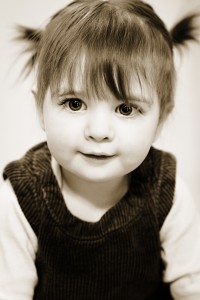 When I was first starting out in photography, I read everything I could about lighting and illuminating a subject--studio lighting, fancy light setups, light ratios, and such. Those are all important aspects of photography and something everyone should read, study, and fully understand. However, there's an element to portraiture and subject illumination that I certainly wished I'd grasped earlier in my career. And that is the reason I've written up this post.
When I was first starting out in photography, I read everything I could about lighting and illuminating a subject--studio lighting, fancy light setups, light ratios, and such. Those are all important aspects of photography and something everyone should read, study, and fully understand. However, there's an element to portraiture and subject illumination that I certainly wished I'd grasped earlier in my career. And that is the reason I've written up this post.
Recently I've been working on more children's portraiture, and kids are unique to the realm of studio-lit photographs. For one, kids' personalities and cheer-factor will show best when their in the most comfortable environment--most of the time that's in their home. Setting up strobes and hoping to keep the subject within the "zone" of the lighting setup is sometimes just not going to happen--the running about, the jumping on the sofa, etc.
For the best success at capturing natural, but fleeting, expressions, it comes down to relying on available light and having an eye for where what will work best. If you're photographing kids in a house, have a look around and visually judge the quality of light room to room. Is there a window light that just has that perfect glow? Maybe there's a lamp that sufficiently illuminates a sofa and wall. All these are element to take into consideration and determine which available light is going to make for great photos.
The photo to the above is one of those circumstances. This was shot with available light from a ceiling-mounted chandelier. The wall behind her was beige, and the surfaces to either side were dark. The dark surfaces on either side served as gobos to suck up light and increase shadow definition--ensuring better separations of the face and cheeks from the ears and light colored wall. Best of all, the overhead chandelier was just above and behind the camera, allowing for some reflection in the eyes and getting the specular highlights that add that extra sparkle to the portrait.
So always keep an eye out for unexpected uses of available light. Sometimes the best light is unplanned, but the photographer always has to keep both the eyes and the mind open to exploit it to the best of creative uses.